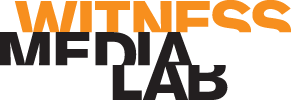CASE STUDY CONCLUSIONS
Storyful was able to build a successful content-discovery methodology.
We wanted to source, verify, and archive key content emerging via eyewitnesses and IS-associated propagandists.
We wanted to do this to allow our news partners to tell a coherent story. The purpose of documenting and verifying this content was to provide our partners with information to either stand up or contest IS claims.
We did this work while being cognisant of the risks involved in the dissemination of perpetrator-created content, published with the intention of causing harm or spreading propaganda.
IS used social media as a tool during its advance on Mosul, when the hashtag #AllEyesOnISIS helped sow fear among citizens and the city’s defenders.
Storyful and our news partners wanted to monitor how this tool was used by IS after the city was captured. Our monitoring showed IS fighters produced content to promote their ideology, to mislead the international media, to recruit new members or share training insights and tactics.
IS, and their opponents, also published violent, graphic content intended to dehumanise their enemies, and to to instill fear in a wider audience.
Storyful investigated each of these kinds of content.
We cataloged hundred of videos from the city, but this case study focuses on examples of some of the most prominent content types:
- Content relating to the initial show of force and military capability (propaganda video)
- Content relating to ordinary life under IS control (propaganda video)
- Content relating to human rights abuses (by IS and others)
This methodology allowed us to develop:
- An understanding of publishing processes by IS militants
- A means to identify a network of IS regional publishers
- Lists of search terms and processes to find this content quickly
- Processes for archiving and verifying the content
The process showed the value of studying the terminology and preferred platforms used by IS and other target groups. We developed a circular process of monitoring Telegram channels, websites and social accounts to follow links to new content and new sources of content as the group moved to counter attempts to shut down their channels and platforms.
The processes and the knowledge gained from it about the city and the situation there could then be applied to monitoring activist and public content during the battle to retake the city.
The methodology set out in this document was also applied to tracking and learning about IS’s media strategy, establishing facts about the group’s culture, practices, military gains, etc, through an analysis of their propaganda material. Working with content of this kind allowed our partners access to verified information about IS movements, training facilities, weapons and policies.
The following considerations applied to Storyful’s reporting:
- How should the content be archived, so as to avoid sharing IS propaganda? – Storyful backed up sensitive content to local servers and did not distribute publicly.
- Will publishing or making available the content endanger anyone or injure the dignity of those involved? – Storyful did not publish the content, but made it available to partner news rooms for use in their reporting. We provided all relevant information to our partners to ensure they could report on the content in a way that provided useful context and verifying information to their audience.
- Storyful was able to share the content in this manner, with necessary caveats for newsrooms about the level of available information, the level of confidence in the verification process and knowledge about the sources of the videos, to inform careful reporting of the story.
